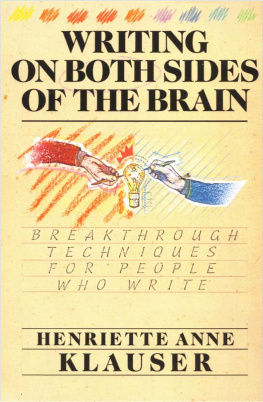In the 1920s and thirties, a host of titles appeared exclaiming (sometimes literally: Victory!!! Success!!! You can do it!!!) the wonders of the science of thought: Napoleon Hills Thinkand Grow Rich, Claude M. Bristols The Magic of Believing, James Allens As a Man Thinketh, and then, in the fifties, David J. Schwartzs The Magic of Thinking Big. Remarkably, all of these books are still in print and readily available at the bookstore now, fifty, sixty, even seventy years later. As archaic the language, quaint the examples, and blatant the sexism seem today, these books still hit a resonant chord with a modern audience.
One small pamphlet, written in1926and still circulating over a million and a half copies later, is simply called It Works by RHJ. This tiny tome sums up the staying power of these proponents of proactive, positive thinking. More than just a glossed-over, Pollyannaish, witless approach, they have an important message, which It Works! puts succinctly in its opening epigram:
IF YOU KNOW WHAT YOU WANT, YOU CAN HAVE IT.
All our years of brain research, all our current knowledge about the corpus callosum, the reticular activating system, and the workings of the human mind, and we are still left with an aw shucks, golly gee sense of wonder that it works.
There is another key element that comes into play, an element that each and every one of these long-lasting books has in common: The first step in all of them is to write down your goal.
Celebrity Stories
I keep hearing wonderful stories about celebrities who, before they were as famous as they are today, wrote down their dreams.
Jim Carrey walked up to the Hollywood Hills and wrote a check to himself for ten million dollars. On the memo line, he wrote, For Services Rendered. For years, the comedian carried the check around with him, long before he was ever paid that kind of money for a movie. Now he is one of the highest-paid entertainers in the industry, getting twenty million dollars for a film. In a touching gesture, Carrey tucked the visionary check into his dads jacket pocket before they buried him.
Scott Adams, creator of the comic Dilbert, has a whole string of writing-down dreams that came true, one step at a time. Adams says that when you write down a goal, youll observe things happening that will make that objective more likely to materialize.
As a lowly technology worker in a cubicle in corporate America, Adams kept doodling at his office desk. Then he began to write, fifteen times a day, I will become a syndicated cartoonist.
Through many rejections, he persevered and finally it happened: he signed a contract for his strip to be syndicated. Thats when he started writing, I will be the best cartoonist on the planet.
How to judge that?
Well, Dilbert is syndicated in almost 2,000 newspapers worldwide. The Dilbert Zone website gets 100,000 visitors a day. Adamss first book, The Dilbert Principle, sold more than 1.3 million copies. Products from mousepads to coffee cups to desk calendars based on the Dilbert characters are everywhere, and there is even a weekly TV show.
Now Scott Adams writes fifteen times a day, I will win a Pulitzer Prize.
Suze Orman, financial wizard, author of the number one New York Times bestseller, The 9 Steps to Financial Freedom, and a frequent guest on Oprah, tells how she started out. She got a job at Merrill Lynch and was terrified she would not be able to meet her sales quota. The most she had ever made up until then was four hundred dollars a month as a waitress.
I created what I wanted for myself first on paper. Every morning before I went to work, I would write over and over again: I am young, powerful, and successful, producing at least $10,000 a month.
Even after surpassing that target figure, she continued to carry the saying around with her, like a lucky charm in words. I replaced the message of fear, and my belief I was inadequate, with a message of endless possibility.
And writing down her new truth helped make it materialize.
My own inspiration for this book came from closer to home. My son Peter at the age of twelve came to me one day with a perplexed expression and a piece of paper in his hand.
I found this list from two years ago when I was cleaning my room. I dont know how, but everything on this list came true, and I forgot I wrote it.
Among other things, he had taken karate lessons, tried out for a play, slept overnight at the park, and gotten a birdall without being conscious of checking off items on the forgotten list.
Peters experience made me think. I noticed the same phenomenon happening in my own life.
In one exciting and memorable life of my week, I managed to autograph books on Broadway in New York City, go backstage at the Metropolitan Opera, be interviewed on the radio for an audience of several million, and hear Placido Domingo live in a full-length opera. It wasnt until I got back to the West Coast that I found, like Peter before me, an old goals list I had forgotten about.
All of the things I had just accomplished were on that list.
I tell the story of Peters list and my list in a chapter of my book Put Your Heart on Paper. Another chapter in that book, The Shoeless Joe Principle, treats synchronicity, or what seems like coincidence, quoting the line from Field ofDreams, If you build it, he will come. Building it before he gets there is stepping out in faith, just as writing it down says you believe that its attainable.
Those two chapters were the beginning of my investigation into the power of writing things down to make them happen, and the genesis of this book.













